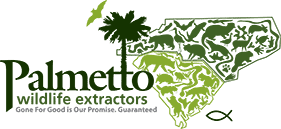Worldwide, there are a total of seven different sea turtle species. Of these, a whopping six are officially listed as being threatened or even endangered within the region of the United States.
In the Carolinas, the most common is the loggerhead; however, there are four others that also visit the waters of the two states. These include the leatherback, hawksbill, the green, and the Kemp’s ridley. The loggerhead, leatherback, and the green lay eggs on the beaches.
Nesting
When going through the reproductive process, females will engage in a migration back to the beach region where they were born. In the nearby waters, they will mate with a male. In a months’ time, they lay their eggs. They will come out of the ocean at night and lay their eggs so that the eggs are safe from the sun and predators. Nests are typically about 18 inches deep.
Once they lay the eggs, they cover the nest with sand and return to the ocean. Within 60 days, the hatchlings will make their way out of the nest and run to the ocean. Within 15 to 30 years, they will reach sexual maturity and start the mating process. It has been estimated that only 1 out of 1,000 young will live long enough to reproduce.
The Population Decline
The population of sea turtles is on the decline. The following reasons are to blame:
- Development and/or traffic on beaches
- Indirect fishing net capture
- Accidental boat collisions
- Beach renourishment that covers nests
- Ocean pollution
Steps to Protect Sea Turtles
There are many steps that may be taken to assist in protecting the remaining sea turtles and their young. The following outlines these measures:
- If you observe a sea turtle that is in the process of nesting, do not disturb the creature. Allow it to complete the process and return to the ocean. Do not uncover the nest once the sea turtle has gone back to the water.
- If you live on the beach, be careful with lighting that is facing the beach. The best course of action is to completely turn off any type of outside light that is facing the ocean.
- If you take your dogs for a walk on the beach, be sure to always keep them on a leash. Do not allow them to roam freely.
- If there are sea turtle nests in an area on the beach where there is a lot of traffic, reduce that traffic that way compaction of the nest does not occur.
- Throw away all trash on the beach.
- If you use watercraft, practice caution.
- Volunteer with beach clean ups and with organizations that protect sea turtles.
- Join conservation efforts.
- Make donations to the Nongame and Endangered Wildlife Fun in the Carolinas.
If you would like to learn more about sea turtles or how you can help in protecting these creatures, you may contact us here at Palmetto Wildlife Extractors today by calling: 855-465-1088

